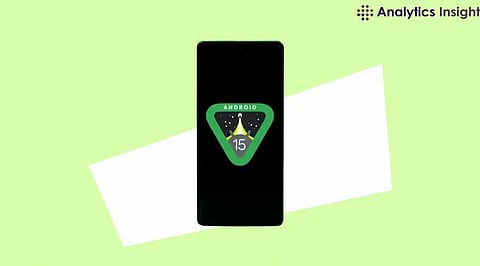

One UI 7 (Android 15) has reached nearly all eligible Galaxy phones and tablets by August 2025.
August brings security patches, setting the stage for the One UI 8 beta rollout in September.
Samsung eyes smoother, AI-driven upgrades with One UI 8 on Android 16, debuting with Fold7 and Flip7.
For Galaxy Samsung users, software updates are the ultimate test of devotion. They dictate how long a phone remains cutting-edge, secure, and looking new compared to more recent competition.
In 2025, that examination is unfolding in the form of One UI 7, Samsung’s Android 15-based software, which has almost finished its worldwide rollout by August. With the next major upgrade, One UI 8 on Android 16, just on the horizon, the company is set to put a line through one of its largest update cycles.
The initial rollout started in April with Samsung’s crown jewels. The Galaxy S24 series and the foldable Z Fold6 and Z Flip6 were first to receive the update in the first week of availability. The Galaxy S23 series followed in late April, and then the S22 line in early May.
Tablets followed. The Galaxy Tab S10 and Tab S9 lines were updated in April, and the older Tab S8 series was patched in May. Mid-range and budget devices, specifically the Galaxy A, M, and F series, took the rollout into June and July. Top-of-the-line models such as the Galaxy A54, A34, A15, M54, and F16 all received the new interface.
By August, Samsung had confirmed that almost all eligible Galaxy devices had been updated, and only a few of the entry-level versions, like the Galaxy M05 and F05, were catching up at the end of July.
One UI 7 is more than a standard upgrade. It brings a vertical app drawer, a new set of refreshed icons, increased folder sizes, and a new lock screen with the Now Bar, which provides glanceable info such as fitness updates or music playback.
AI integration is its most excellent stride. AI capabilities like Drawing Assist, photo editing with AI, audio noise-cleaning, and auto-generated GIFs are now native on all devices. Samsung also brought Galaxy AI tools to older flagships such as the S23 Ultra, something critics maintain puts pressure on Apple, which has been lagging in democratising AI features.
Security has also been tightened. The April fix fixed over 60 vulnerabilities. However, the following patches, such as the August 2025 security patch, concentrated on making bootloaders harder to roll back and preparing devices for the next transition.
Also Read: Samsung Overtakes Apple: US Smartphone Market Update Hints at Major Shift
Samsung’s four-year OS upgrade promise, launched in 2021, has defined supported and unsupported devices. Previous flagships such as the Galaxy S20 and Note 20 were left behind, as were budget phones that debuted prior to 2021. Though these phones will continue receiving security patches, they won’t upgrade to Android 15 and above.
Since August, Galaxy users have no longer received feature-packed updates under One UI 7. Samsung is instead working on stabilizing the platform with monthly patches. Devices like the S24 Ultra and mid-range powerhorses like the Galaxy A54 are getting the August patch, but no fresh tools.
Commentators observe that this peaceful period is intentional. Samsung is slowing down One UI 7 in readiness for One UI 8 beta testing, which was previously scheduled for mid-August but has been pushed to September.
The focus is now on One UI 8, which will appear on the forthcoming Galaxy Z Fold7 and Z Flip7 later this year. Based on Android 16, the new interface is likely to further develop Galaxy AI, bringing real-time notifications, improved multitasking, and enhanced generative editing capabilities.
Yet the company has a hill to climb before trust is fully restored. The initial deployment of One UI 7 was temporarily sullied by a lock-screen glitch that required a suspension, and critics claim that Samsung’s staggered release windows infuriate consumers. “The features are interesting, but the rollout cadence is suboptimal,” writes one industry observer.
For Galaxy users, the short-term assignment is straightforward: ensure their phones are running the most recent patch. The update process is routine: Settings → Software update → Download and install, with a Wi-Fi connection and a full battery.
With One UI 7 effectively done, Samsung is already turning entirely to One UI 8. For consumers, that translates into a stability period in August and a fresh round of AI-driven improvements from September onwards.
The bottom line is that Samsung’s One UI 7 deployment has been broad, all-encompassing, and seamless, following a bumpy beginning. But the real test ahead is whether One UI 8 will make it on time, without glitches, and with sufficient innovation to keep Galaxy users happily ensnared.
